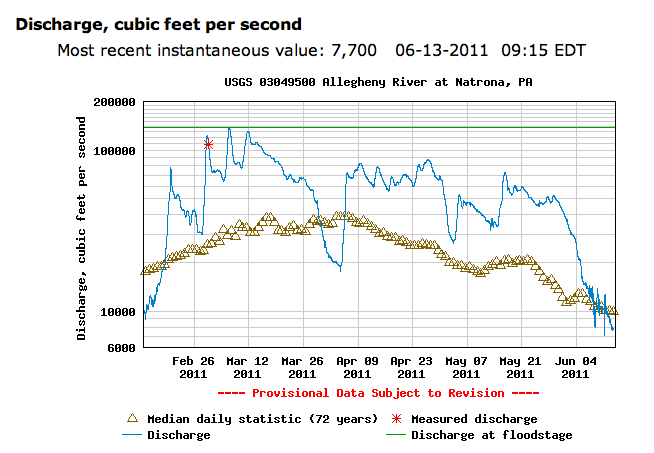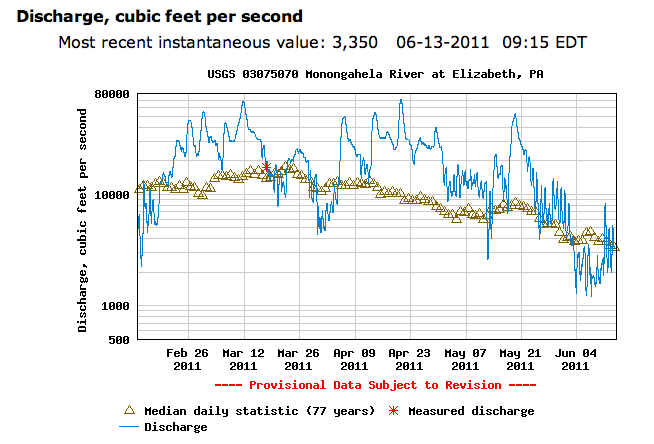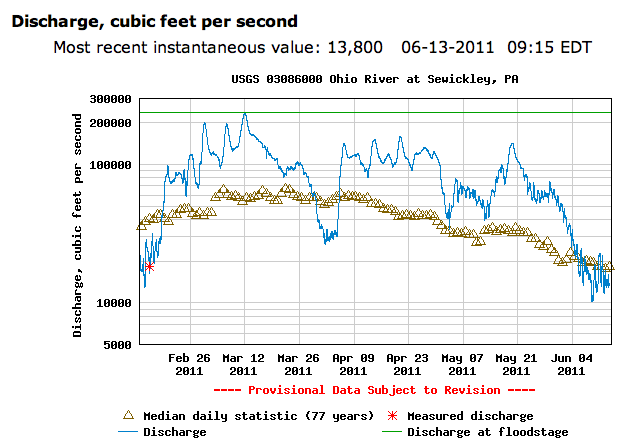Flood
Early June 2011
We have had a late start to the sailing season this year on the rivers. The news has been filled with sad reports of flooding of the Mississippi river of inundated houses and levees broken to release the surging river.
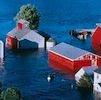

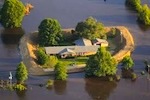
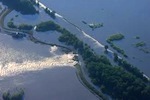
The rivers of Pittsburgh feed this torrent. The Allegheny and Monongahela Rivers unite at the Point to form mile zero of the Ohio River. This river then passes through several states until it joins the Mississipi in Illinois.
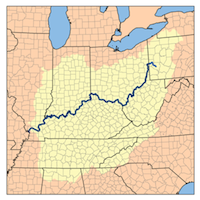
My habit is to run along the river trails around Pittsburgh. Over the last month or two, as I ran along the river banks, I had little doubt that these rivers were contributing to the Mississipi flooding. I didn't bother to look up the measured flows tracked by the Army Corps of Engineers. Just looking at the river, I could see currents too strong for sailing.
When you stand next to it, the power of the river current is easy to see. Debris is carried along at a walking pace. On one run (May 29th), I took a camera with me and tried to capture that power in a snapshot. It turns out to be much harder to find a static image that does the job. Here are a few.
These are some piers on the Allegheny river at the the Tenth Street Bridge. You can see water welling around them as the current presses past.
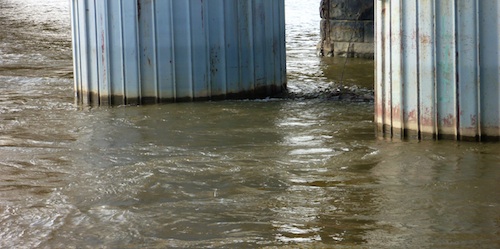
This is a buoy on the Allegheny, just downstream of the 6th Street Bridge. The eddies formed by the current trail like a bow wave.
Finally, in the first two weeks of this month, I began to notice the rivers calming. Here are the plots of the river flows on the three rivers on June 13, 2011 for the previous 60 and 120 days days. (Click links for the 60 day charts)
For the Allegheny:
For the Mon:
For the Ohio:
Both the Ohio and Allegheny reached "flood stage"--the point at which they do damage--around March 12. Then the flows on the Allegheny were over 100,000 cubic feet per second and on the Ohio in the mid 200,000 cubic feet per second. These flows are over ten times greater than the flows that permit comfortable sailing.
The triangles give averages (medians) historically. You can see that it is only since the beginning of June that the river currents have dropped back to historical averages.
These currents of June 13 were the currents of my first sail of the seasons.
John D. Norton
Back to main
